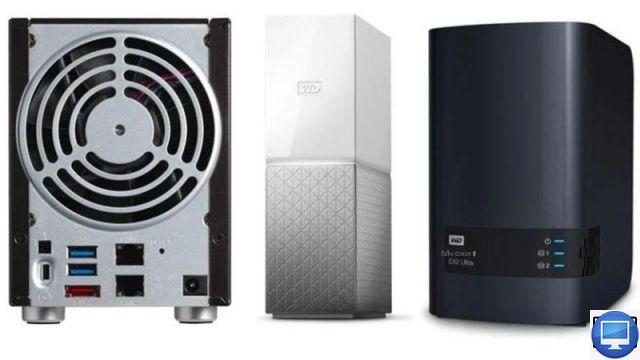
One of the biggest overlooked features of macOS is Time Machine, this system quietly performs an automatic backup of the entire contents of your Mac's hard drive every hour.
If you accidentally delete a file, you can go back and view all previous versions of that file that you've saved.
If your Mac starts behaving weirdly and you think you've been infected with malware, just restart your Mac and use Time Machine to restore all of macOS to an earlier, untouched state.
Of course, for this you need to have an external hard drive connected to your Mac and capable of storing all your old backups. To avoid accumulating HDDs/SSDs, there are NAS servers.
In this article, we'll show you the best on the market, and if you want to learn more about the benefits of NAS, how much storage you'll need, and what features to look for, jump straight to our buying advice below. our ranking.
1Western Digital My Cloud Home - The best in all areas
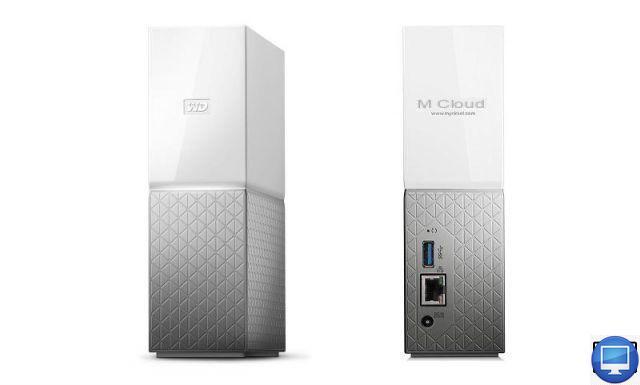
- Indicated price:
You're spoiled for choice in Western Digital's My Cloud range, with several models available for individuals and small businesses, as well as a number of Expert and Pro models for larger enterprises.
The My Cloud Home is faster than the previous version and offers additional features such as support for Plex Media Server software.
Its 8TB version should be enough for most homes, as well as small offices and freelancers. Its design is elegant and has a width of only 53 mm. It easily finds its place on a desk or a shelf near your router.
There is also a larger model, the My Cloud Home Duo; it can accommodate two hard drives to provide much more storage space. It can be set to RAID 1 for additional data protection, but if you want more sophisticated RAID features, as well as the ability to install and remove the drives yourself, then you'll need to upgrade to the My Cloud Expert or My Cloud Pro.
My Cloud Home server apps manage tasks quickly and easily. With the iOS app make automatic backups of your photos and videos, with the macOS app do the same but via the Time Machine.
The server has very simple and effective controls. For example, with a simple right-click on a Mac folder, you can automatically synchronize the contents of this folder. This is very practical for people who want to have an additional backup of their work files or their current projects, in addition to a Time Machine recording.
Right-click on a file stored on My Cloud Home, you get a download link to quickly share this said file with your friends or colleagues.
However, this NAS server has a drawback; it is not possible to create individual accounts on Mac, which requires you to go through the app. iPhone or iPad, you can invite a relative or collaborator to create their own folders on My Cloud Home.
2
Western Digital My Cloud EX2 Ultra - A fast and easy NAS
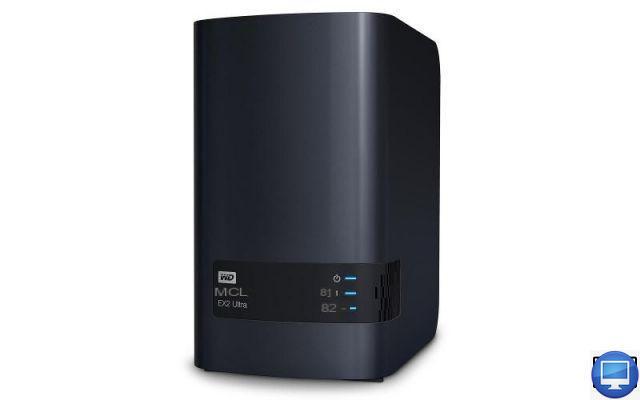
- Indicated price:
The EX2 Ultra is a no-compromise NAS drive with great features and customization options, yet still affordable enough for home users and freelancers, such as photographers or designers, who need a reliable server.
This is a two-bay NAS, WD has included its high-performance Red drives and 1GB of DDR3 memory to help the EX2 Ultra multitask when multiple people are using the drive at the same time over the network.
The EX2 Ultra features a Gigabit Ethernet port, and two USB ports for connecting an external hard drive for additional storage.
The fact that it has 2 bays means you can set the EX2 Ultra to RAID 0 for better performance, writing data to multiple drives, or RAID 1, this is a mirror backup, data is saved simultaneously from disk to disk, it creates separate copies of your files for increased reliability.
Despite all its advanced functions, the configuration of the EX2 Ultra remains very simple, because the server supports Time Machine, it automatically saves the files of your Mac.
You also have the My Cloud app for iOS/iPadOS and Android, which is used to copy and share files via non-Apple devices. It allows remote access. The web browser interface is also available for Macs and PCs. Using it, configure RAID settings and functions such as FTP server, use it to stream your music collection.
We advise you to check the changes brought by the My Cloud software update, it could limit the compatibility with certain web services.
If you wish, the EX2 Ultra is available in a discless version, so that you can install your own.
3Synology DiskStation DS218 - For NAS Experts
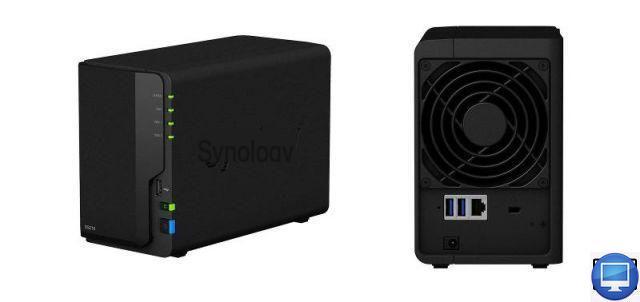
- Indicated price:
Synology's two-bay DiskStation DS218 server is the successor to the already impressive DS216 in its day.
The DS218 comes without a drive, so add your own and Synology makes it easy as the bays include two trays that open without any hassle. A Gigabit Ethernet port is located on the back to connect it to your router, via the three USB ports, connect a USB key, a camera or an external hard drive.
Moreover, it is strange that the one placed at the front is a USB 2.0, while the other two are USB 3.0, faster.
The 2.0 port even has a button to copy all files from your storage devices to the DS218.
After the installation is complete, just type find.synology.com in your web browser, then you will be redirected to Synology's web assistant. It detects the NAS and installs Synology's DiskStation Manager (DSM) software.
The DS218 can be used for Time Machine backups, it features RAID 0 and RAID 1 functions to increase the performance and security of your data. Synology's own "Hybrid" RAID format allows disks of different sizes to be combined in the DS218. There is also a QuickConnect option for remote connection.
The DS218 also works great as a media server, with a powerful 1,4GHz quad-core processor. Thanks to the latter, it is able to convert (transcode) video files into various formats, suitable for a wide range of different devices. It can even process 4K video for streaming to Apple TV or other media player. Also store your music and stream it via AirPlay.
Different functions allow you to work with music or videos, to store photos from your iPhone remotely, there are also some for Apple TV and Apple Watch.
Be aware that Synology offers comprehensive user manuals and tutorials on its website to help you master this NAS.
4Buffalo LinkStation 220D - Un NAS polyvalent
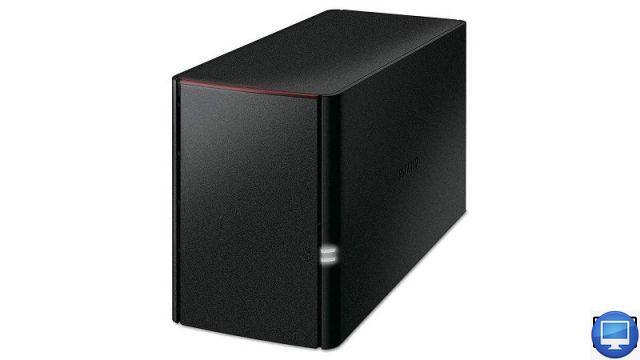
- Indicated price:
The Buffalo LinkStation 220D is a versatile and affordable NAS drive that is suitable for home and business users alike. However, Buffalo products sometimes lack simplicity.
The LinkStation 220D is a two-bay NAS with two separate hard drives. It is available in a discless version to insert yours. It is also available in 2 TB, 4 TB or 8 TB versions.
The LinkStation can act as a RAID drive; RAID 0 for maximum performance, RAID 1 for maximum data protection (by storing separate copies of your data on both drives). There is also a USB port, use it to make additional recordings on an external drive.
Buffalo's NAS Navigator for Mac application is used to view the LinkStation on your network and displays basic information, such as its IP address. However, for any other functionality, you will need to open a web browser.
It is Time Machine compatible, provides “web” remote access, and allows you to use the LinkStation to stream your music over the network.
We recommend the LinkStation for those who already have knowledge of the NAS system, novices may get confused with this model.
What are the advantages of a NAS server?
Rather than connecting your hard drive to a USB or Thunderbolt port on a single Mac, consider NAS (acronym for Network Attached Storage Server) server. You can connect it through an Ethernet port on your home or office router, and its storage space can be shared by everyone with access to your network.
Early NAS servers were expensive and complex, and mostly used by large companies that needed a central backup device to be shared among multiple employees.
These days, most homes have their own Wi-Fi network, operated by multiple people often with multiple devices.
How to choose a NAS server for your Mac?
Here are some essential features to take into account before any purchase of your future NAS server.
Time Machine support
Most NAS servers are compatible with macOS, but not all of them are "engaging". For example, some NAS will not allow you to take advantage of the Time Machine to perform network backups.
Time Machine support is therefore an essential feature to consider.
User accounts and shares
It is also very important to have the possibility of creating individual accounts, so that each person can have their own space on the NAS disk, and shares.
Which most NAS do, but sometimes it takes a bit of know-how to understand how each drive handles this process.
Mobile device compatibility
It is also very important to ensure that the desired NAS offers an application for iOS/iPadOS. Most Apple users back up photos, videos, and any other files to iCloud from their mobile devices, so it's reassuring to have a backup backup on your NAS.
A good NAS box will also allow you to share photos and videos and provide the possibility of remote access.
streaming
Many people use their NAS drive as a central media server for their home. For example, by streaming music and videos on a games console connected to their TV in the main room. Mac users should check if a NAS drive can stream files to an Apple TV, or act as an "iTunes server", storing your music collection on the NAS drive so that it can stream music to each Mac or network iOS device.
How much storage do you need?
This is entirely up to you, but it's worth mentioning that some NAS drives are more flexible than others.
Some NAS come with a built-in hard drive, usually at least 2TB, but the hard drive is fixed, so it can't be replaced when full. However, the NAS has a USB port to connect a hard drive and add some additional storage.
NAS without hard drive
However, many NAS are sold without a hard drive, they simply provide two or more empty bays in which you can insert the hard drives of your choice. They are more expensive but allow you to customize the NAS with the desired storage space.
Also, if you're not satisfied, then you simply remove the old discs and insert new, more generous ones.
This type of NAS drive usually also offers a number of RAID (Redundant Grouping of Independent Disks) options, i.e. the use of multiple hard drives for additional performance and data protection.
Related Content: Storage Tests


























